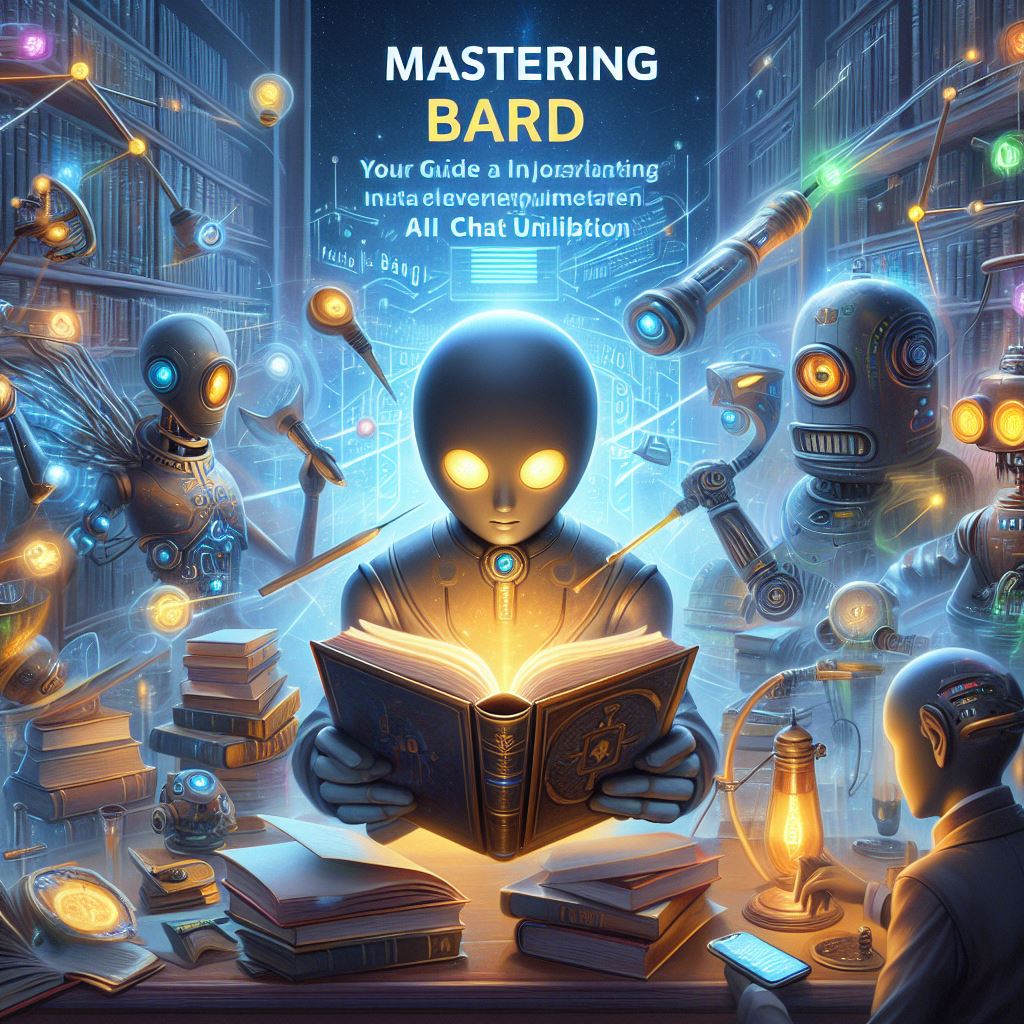The Google Bard AI Chatbot represents a significant step forward in the world of conversational AI, offering users the convenience of natural language interactions across multiple platforms. Its multilingual support, contextual understanding, and continuous learning capabilities make it a valuable tool for users in India and around the world.
Google Bard has emerged as a pioneering chatbot application that promises to revolutionize the way we interact with technology. Google Bard, powered by advanced AI algorithms, aims to provide users with a seamless and intuitive conversational experience.
Exploring the AI Chatbot Revolution
In this comprehensive guide, we will delve into the world of Google Bard, its features and capabilities, and the potential it holds for transforming communication in the digital age. Additionally, we will explore how to use Google Bard in India and touch upon its journey, including the challenges it faced.
What is Google Bard?
Google Bard is an AI-powered chatbot developed by Google. It is designed to engage in natural-language conversations with users, providing responses and assistance in a conversational manner. Google Bard represents a significant leap forward in AI-driven language understanding and generation, enabling more sophisticated and context-aware interactions.
1. Key Features of Google Bard:
- Conversational Abilities: Google Bard is designed to engage in open-ended conversations, making it a versatile tool for various tasks.
- Multi-Platform: It is available as a standalone app, a web-based extension, and integrated into various Google services, making it accessible across different platforms.
- Context Awareness: The chatbot can understand context within a conversation, allowing for more meaningful and coherent responses.
- AI Learning: Google Bard utilizes machine learning techniques to continuously improve its understanding of language and user preferences.
- Multilingual Support: It offers multilingual capabilities, allowing users to communicate in different languages.
2. Google Bard: The Journey So Far:
Google Bard represents the culmination of years of research and development in the field of natural language processing (NLP). The journey to create an advanced conversational AI has not been without its challenges and setbacks.
Early Attempts: Google’s foray into chatbots began with the development of prototype chatbots like Google Duplex, which could make restaurant reservations and schedule appointments on behalf of users. These early experiments paved the way for more ambitious projects like Google Bard.
Challenges Faced:
- Accuracy: One of the primary challenges was achieving a high level of accuracy in language understanding and generation. Google Bard needed to consistently provide coherent and relevant responses.
- Ethical Considerations: As AI chatbots like Google Bard become more advanced, concerns regarding ethics and responsible AI usage have arisen. Google has worked to ensure the chatbot adheres to ethical guidelines.
- Ongoing Development: Google Bard is an ongoing project, with continuous updates and improvements being made to enhance its conversational abilities and expand its capabilities.
3. How to Use Google Bard
Using Google Bard is a straightforward process, whether you prefer to access it through the standalone app, the web-based extension, or integrated services. Here’s how to get started:
Step 1: Standalone App:
- Download and install the Google Bard app from your device’s app store.
- Open the app and sign in with your Google account.
- Start a conversation by typing or speaking your query or request.
- Google Bard will respond conversationally, providing information or assistance based on your input.
Step 2: Web-Based Extension:
- If you’re using the web-based extension, ensure you are logged into your Google account in your web browser.
- Access Google Bard by clicking on the extension icon in your browser’s toolbar.
- Begin a conversation by typing or speaking your query or request.
- The chatbot will respond within the extension interface.
Step 3: Integrated Services:
- Google Bard may be integrated into various Google services, such as Google Search or Google Assistant.
- To use it within these services, simply initiate a voice or text-based interaction by saying “Hey Google” or using the designated trigger phrase, followed by your query or request.
- Google Bard will respond within the context of the integrated service.
4. Google Bard’s Advantages
Google Bard offers several advantages that make it a compelling tool for users seeking natural and context-aware interactions:
- Convenience: Google Bard simplifies complex tasks by allowing users to interact conversationally, reducing the need for keyword-based searches or navigating through menus.
- Accessibility: The chatbot is accessible on various devices and platforms, making it easy for users to engage with it wherever they are.
- Contextual Understanding: Google Bard’s ability to understand context within a conversation enables more meaningful and coherent interactions.
- Multilingual Support: It accommodates users who communicate in different languages, enhancing its accessibility and usefulness on a global scale.
- Learning and Improvement: The AI-powered chatbot continuously learns and improves its responses, ensuring a more personalized experience for users.
5. Google Bard in India: How to Use It:
Using Google Bard in India is a straightforward process, similar to its usage in other regions. Google Bard’s multilingual support includes several Indian languages, making it accessible to a wide range of users.
- Step 1: Access via App or Extension:
Download and install the Google Bard app from your device’s app store, or use the web-based extension as mentioned earlier. - Step 2: Language Selection:
When using Google Bard for the first time, it may prompt you to select your preferred language. You can choose from various Indian languages, including Hindi, Bengali, Telugu, Tamil, and more. - Step 3: Start a Conversation:
Initiate a conversation by typing or speaking your query or request in your chosen language. - Step 4: Contextual Interactions
Google Bard is designed to understand context, so you can engage in open-ended conversations, ask follow-up questions, and receive relevant responses. - Step 5: Integrated Services:
Google Bard may be integrated into various Google services used in India, such as Google Search and Google Assistant. You can access it within these services using the designated trigger phrases.
6. The Evolution of Chatbots: Google Bard’s Impact
Google Bard’s emergence is indicative of the broader evolution of chatbots and conversational AI. Chatbots have evolved from simple rule-based systems to sophisticated AI-driven models that can engage in human-like conversations. This evolution has far-reaching implications for various industries and applications.
- Customer Service: Chatbots are increasingly used in customer service to provide instant responses to inquiries and assist customers with common issues, improving efficiency and user satisfaction.
- Education: AI chatbots can serve as virtual tutors, providing personalized assistance to students and helping them with their studies.
- Healthcare: Chatbots can offer healthcare information, schedule appointments, and even provide mental health support to users, enhancing accessibility to medical services.
- E-Commerce: E-commerce platforms use chatbots for customer support, order tracking, and product recommendations, enhancing the shopping experience.
- Entertainment: Chatbots are being integrated into entertainment platforms to engage users in interactive storytelling experiences, games, and more.
7. Challenges and Potential Pitfalls
While Google Bard and similar chatbots hold immense potential, there are challenges and potential pitfalls that must be addressed.
- Privacy Concerns: Conversational AI systems like Google Bard collect and process user data, raising privacy concerns. Safeguarding user information is crucial.
- Ethical Considerations: Ensuring that chatbots adhere to ethical guidelines and do not engage in harmful or deceptive behaviors is essential.
- Accuracy and bias: Chatbots must provide accurate information and avoid perpetuating biases or misinformation.
- User Experience: Maintaining a positive user experience is paramount. Chatbots should be intuitive and responsive to user needs.
8. Google Bard’s Future and Ongoing Development
The journey of Google Bard is far from over. Google continues to invest in AI research and development with the aim of making chatbots like Bard even more capable and versatile. The future holds exciting possibilities for AI-powered chatbots, including improved natural language understanding, enhanced multilingual support, and deeper integration into various applications and services.
As Google Bard and similar chatbots continue to evolve, they have the potential to transform how we interact with technology by simplifying tasks and enhancing accessibility. However, addressing challenges related to privacy, ethics, accuracy, and user experience will be crucial to ensuring that these AI-powered chatbots remain valuable and responsible tools in the digital age.











